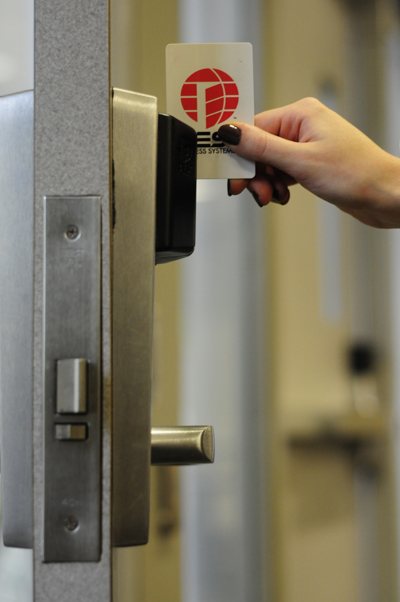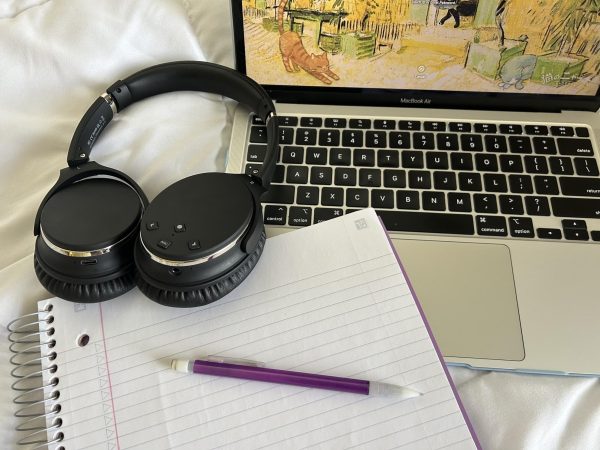Are electronic keys worth the cost?
September 21, 2011
Electronic locks are the gateway to most of Kent State’s buildings.
Students use them regularly to enter dorms and as academic buildings are renovated, they join the dorms in being secured by electronic locks.
By the numbers:
1,036 electronic locks on academic buildings
100 of electronic locks are online locks
936 of electronic locks are offline locks
Student key cards in use at Franklin Hall as of Friday, Sept. 16: 245
Faculty key cards in use at Franklin Hall as of Friday, Sept. 16: 100
$2.50 per key card
They’re costly (ranging from $587 to $2,000), but are they effective?
As with anything electronic, malfunctions are inevitable. From a key simply not working to a person physically being locked inside of a room, the locks can pose a problem for users.
Ellen Losh, administrative clerk for Franklin Hall, said one of these instances was during the summer of 2011 when a journalism and mass communications professor became locked inside her office because of a lock issue.
“There was a malfunction in the striker in the door, and I had both locksmiths over here,” Losh said. “They tried everything, and we ended up pushing up a ceiling tile in an office next door and dropping tools down to her through the ceiling and she was able to get the pins out and get the door.”
Kyle Cuppett, head locksmith for Kent State, said he was one of the locksmiths called to Franklin Hall to get the professor out of her office.
“Inside the lock, there was a piece in the mortise casing that broke and when it broke it fell down inside,” he said. “So when you put the handle down to open the door, it wouldn’t let it go all the way down.”
However, Cuppett said it’s extremely rare for someone to get locked inside of an electronic door.
“Usually, 99 percent of the time, there is no way that could happen because if you are on the inside, it’s always on the unlock mode,” he said.
But if problems like these happen, that’s where Mark Moscarello comes in. He’s the glazier supervisor for building maintenance.
He said the academic buildings are protected by online locks on the entrances, which allow building maintenance to control the lock from a server.
“We can add users; we can delete users right there in our lock shop,” he said. “It’s very convenient.”
Offline locks are used on the individual classroom and office doors. Moscarello said they require building maintenance to physically upload information to the lock with a PDA or a netbook.
He said the offline locks contain battery packs which are replaced regularly to prevent malfunctions.
“The battery packs are good for three years, but we have them on a rotation where we change them every two years,” he said. “However, every once in a while, we do get the bad battery packs or what not, but if the battery has actually died in the lock, the only thing that will happen is that the card won’t work.”
Moscarello said malfunctions with the door do occur but not often.
After talking to his staff he estimated that in the past seven years there have been fewer than five instances in which someone was locked inside of a room with an electronic lock.
Losh said there was only one other lock malfunction when Franklin was first renovated.
“On the first floor they had to bust the glass out in one of the classrooms to get somebody out,” Losh said. “Since we’ve been here six years, it’s only happened twice, so that’s pretty good. Anything electronic will malfunction; just give it a chance.”
Contact Kelly Tunney at [email protected].
























